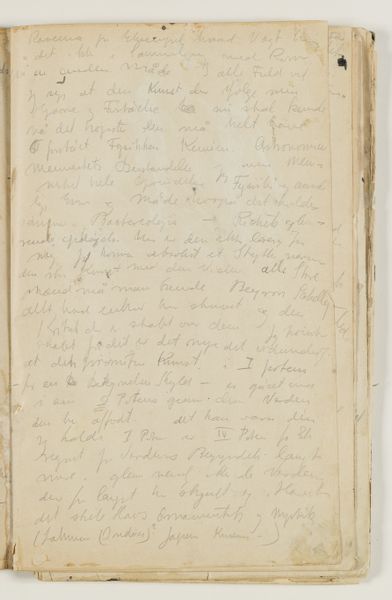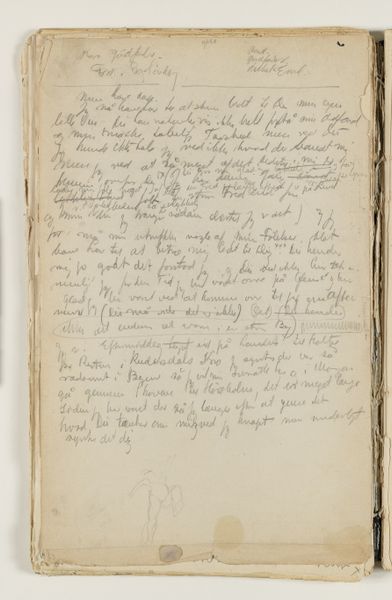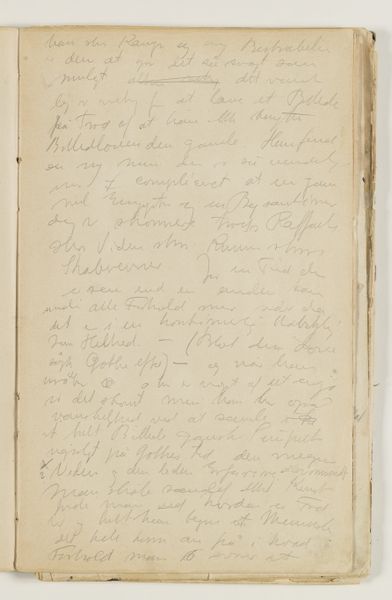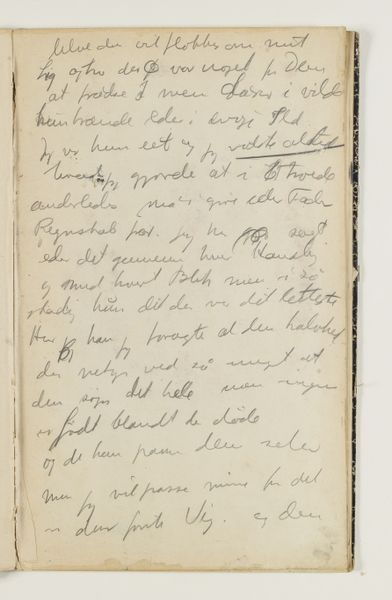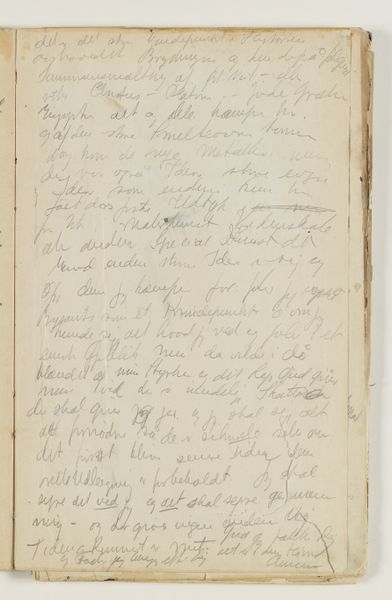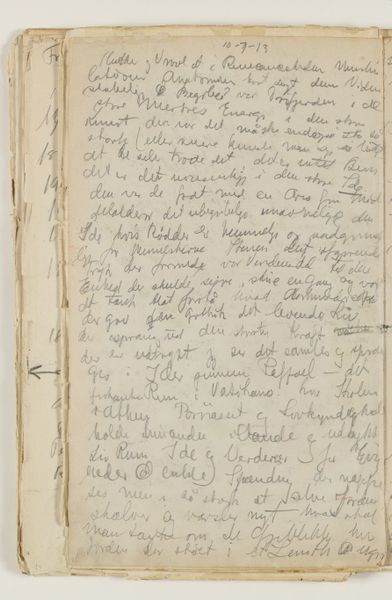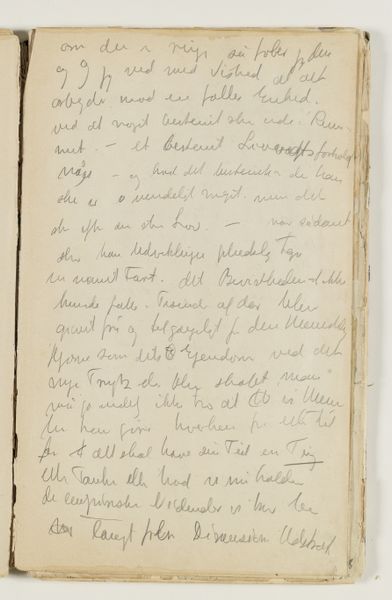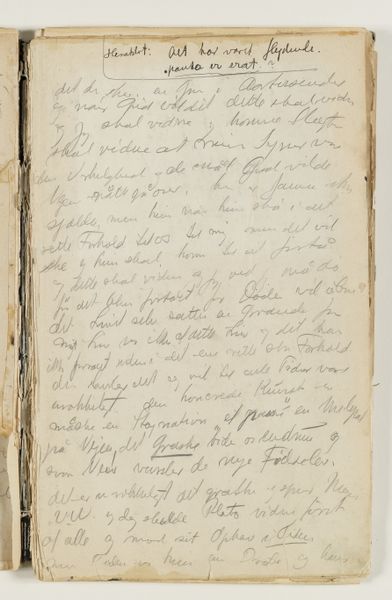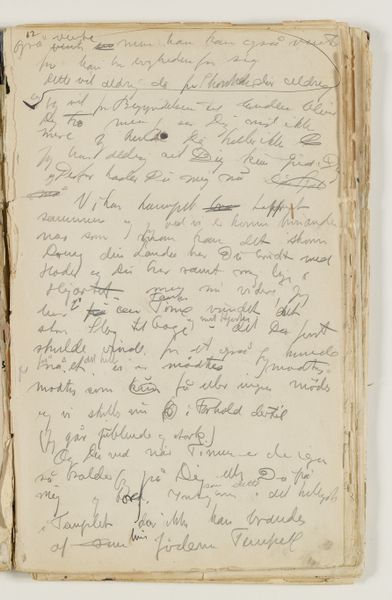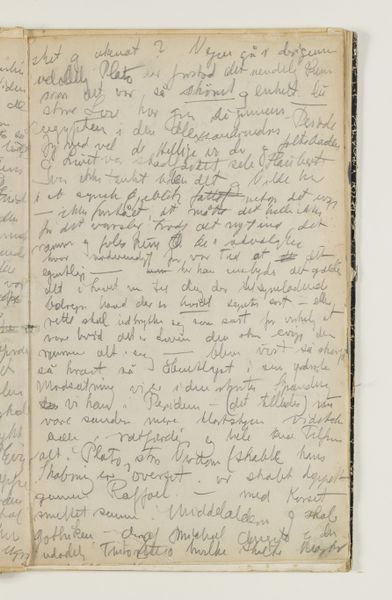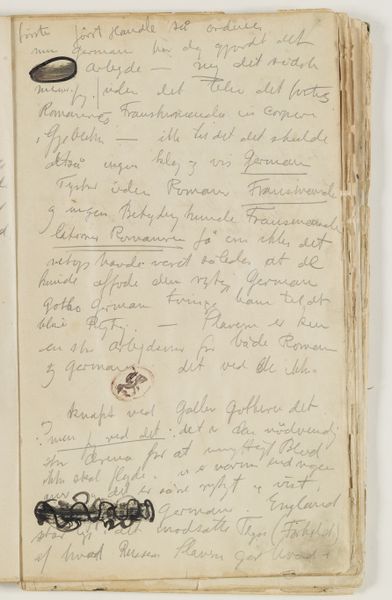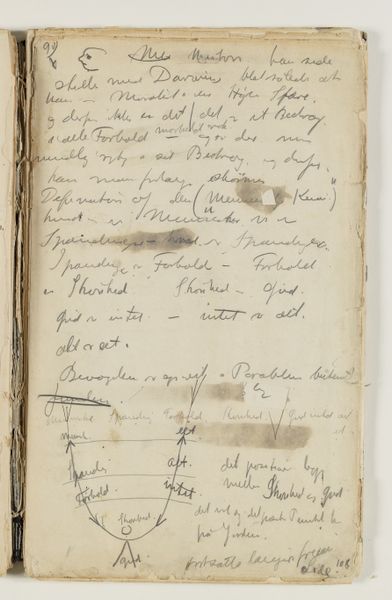
Om "Kampen", "Evnen" og "Erkendelsen". Desuden en række blyantskrads og løse penselstrøg 1913 - 1914
0:00
0:00
drawing, coloured-pencil, paper, watercolor, ink
#
drawing
#
coloured-pencil
#
water colours
#
paper
#
watercolor
#
ink
#
coloured pencil
#
watercolor
Dimensions: 337 mm (height) x 207 mm (width) (bladmaal)
Curator: This drawing by J.A. Jerichau (II), made around 1913-1914, combines watercolor, colored pencil, and ink on paper. The title is quite long, something about “The Fight, the Ability, and the Recognition.” It’s currently held at the SMK. The delicate strokes create an intriguing effect, making it look almost like a page from a personal diary rather than a formal artwork. It's visually intriguing, but what is your initial impression? Editor: That’s a good way to put it; it's not particularly imposing or expressive, but instead has a quiet, reflective air. There's text as well, like notations or musings alongside the drawings. How do you interpret a piece like this within the art world and its history? Curator: Given the social context of the early 20th century, we might interpret this piece as part of a broader artistic turn inward, toward psychological landscapes. Artists at the time were wrestling with ideas of personal identity, trauma, and the subconscious. The text fragments seem almost like automatic writing. What do you make of the inclusion of text itself? Editor: It makes me think of private journals, almost as if we’re glimpsing a thought process. Are there other contemporary artists doing similar work that emphasizes this personal, interior view? Curator: Certainly. Think of artists involved with Expressionism and early Surrealism. They often used fragmented forms and text to express interior states, resisting traditional academic modes of representation. Considering this piece’s possible rejection from institutions initially, how does this affect your perception? Editor: Knowing it wasn’t immediately embraced actually makes me appreciate it even more. It feels more authentic and perhaps ahead of its time in exploring subjectivity. Curator: Exactly. That rejection underscores how socio-political structures can shape what gets canonized as “art”. It prompts us to question whose stories get told, and how. Editor: I see now how crucial it is to examine the cultural environment alongside the artwork itself. It enriches the viewing experience tenfold. Curator: Absolutely. And that intersection between art and its context keeps things constantly evolving. There's always a new angle from which to examine these works.
Comments
No comments
Be the first to comment and join the conversation on the ultimate creative platform.
